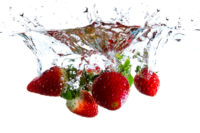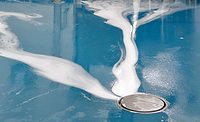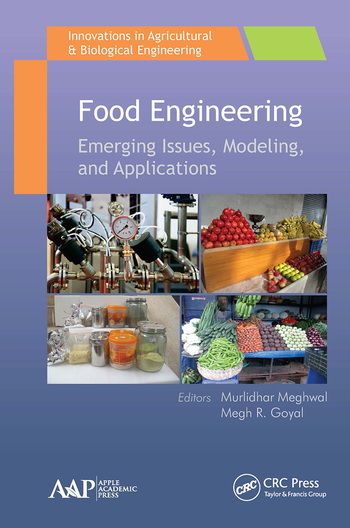Water conservation, water reuse and wastewater pretreatment
Click here to read the "Take a load off" article
Water conservation, water reuse and wastewater pretreatment strategies take many forms. Culligan Matrix Solutions, the commercial and industrial division of Culligan International, and Emerson Industrial Automation, a business unit of Emerson, point out less obvious areas for efficiency improvements.
Optimize existing operations
A focused walk-through of the plant was a significant first step for a Texas-based beverage producer looking to reduce the impact of its operations on the environment by enhancing the existing water treatment capabilities at the facility, says Kumi Premathilake, director of marketing at Culligan Matrix Solutions.
A key goal for the beverage maker was narrowing its overall water-to-use ratio. The plant walk-through revealed leaking solenoid valves on two of the carbon units in the process treatment equipment, which caused additional water loss by way of excess drainage.
The beverage maker improved efficiencies in water use by adjusting existing water equipment—such as two Nano-type membrane filters that were operating at lower operating recoveries and causing excess water to be lost in the process—to operate closer to design parameters. Other areas of optimization were found at points where water use is critical, from reclaiming plant CIP process wastewater and reviewing plant cooling tower cycles to the water quality at the boiler, which impacts boiler performance and energy-savings by reducing boiler blow down. “Repairs to the solenoid valves and adjustments to the Nano reject valves saved the plant 80 gmp of water or 115,200 gallons of water per day—translating to annual water savings of over 42 million gallons,” says Premathilake.
“Part of the solution to improving water reuse at the plant involved reclaiming reject water from the existing plant process water Nano filtration units for reuse as utility or inlet feed water,” says Premathilake. This included the addition of Culligan’s Nano membrane reject recovery tank and brine reclaim reverse osmosis Nano device, a storage tank, level controls and re-pressurization pump skid. The installation of Culligan’s Nano technology, Nano-type membrane and related equipment and control devices yielded more than 100 gpm of additional product water for the plant while trimming the concentrated reject water to just 85 gpm. The plant’s overall water-to-use ratio fell 20 percent from 3.1 to 2.5, says Premathilake.
Conveying savings
Finding an opportunity for water conservation on the conveyor line of a winemaker’s bottling operation wouldn’t seem obvious at first glance. Yet Vincor Canada, that nation’s largest producer and marketer of wine and related products, discovered the application of soap and water, used to lubricate standard stainless steel or acetal-type conveyor chains, required multiple gallons of water for each gallon of product made and created several operational problems. The company turned to System Plast, a business unit of Emerson Industrial Automation, says Jeff Himes, senior product manager at Emerson.
Beverage makers from carbonated soft drink producers to brewers to winemakers typically convey PET bottles, glass bottles and cans on conveyors that require continuous soap and water lubrication. The lubrication helps lower friction between the conveyor belt and the wear strip beneath it helps smooth product flow and prevents product sticking on spillage, says Himes.
However, soapy water tends to run off the conveyor to the production floor, creating a wet environment that can give rise to bacteria or create slip hazards. The soap can also saturate and damage product labels resulting in rejected products, increased label use and reprocessing costs.
Some customers turn to a dry lubricant applied to the wear strip and conveyor. This reduces the use of water and soap, but the lubricant can accumulate on the product or in machine components, causing process interruptions. Additional costs for the dry lubricant are also incurred.
At the Vincor facility, product moves through the 200-ft. conveyor line at 70 ft. per minute, producing about 86,000 bottles per shift with two shifts per day. The company selected System Plast’s New Generation chain with Nolu-S wear strips for the application, eliminating the need for soap and water or dry lubricant. The System Plast NG chain delivers a 15 percent reduction in coefficient of friction compared to an acetal chain, runs more quietly, typically has a longer lifespan and moves smoothly without a jerking motion, says Himes. System Plast Nolu-S wear strips and guides are made from a UHMW-PE compound that delivers a low coefficient of friction and enables reduced lubrication to high-speed conveying operations. Eliminating soap and water saved Vincor nearly $3,400 and removed floor cleanup issues. Production also increased 2 percent, adding $26,000 to Vincor’s bottom line, says Himes.
For more information:
Kumi Premathilake, Culligan International, 847-430-1217, kumi.premathilake@culligan.com
Jeff Himes, Power Transmission Solutions, Emerson Industrial Automation, 859-727-5263, jeff.himes@emerson.com
Looking for a reprint of this article?
From high-res PDFs to custom plaques, order your copy today!








